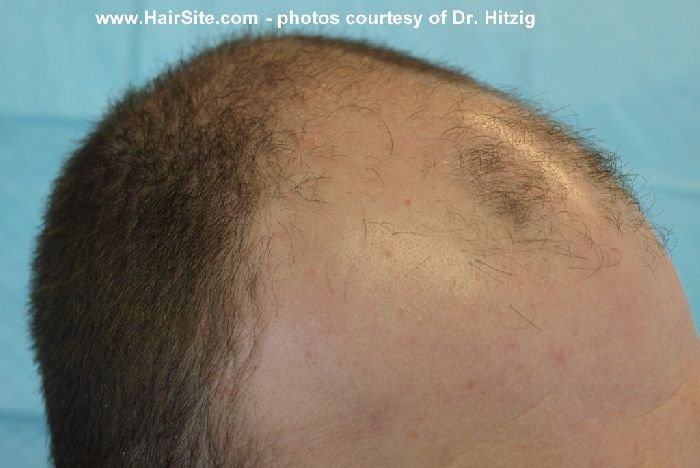» Why has no one commented on the fact that the transplanted front looks
» pluggy, sparse! I even noticed one or two two
» hair grafts in the hairline. Acell and donor preservation are great, but
» if a surgeon can’t make the final result look natural (which is the entire
» point of the procedure) then who cares about Acell!
You know, maybe its Acells fault because it animates the follicles to produce new hair and now he has 4 hairs coming from one Follicle 
You know this guys has still the ressources to do multiple transplants so with a touch up its getting better and better.
And i think that the results only with focus on the hair itself are good, because the hair is completly capable of growing LONG and not to grow up a little and then minituarize.
Also we dont know how many grafts were harvested.
If i had to choose between “One time full hair transplant with depleated donor” and “Multiple procedures with the same result like a full one time hairtransplant, but without donor depleation” guess what i would choose…absolutely the second option for several reasons.
-
You never knew if you need donor in the future (carring or trauma or burn victim or whatever)
-
Maybe you get a midlife crisis some day and want a NW0 hairline, you can never say for sure
All i see from those results are :
-
Results with Acell seems consitent over time and in patients (i am speaking of acell in combinations wirth all this PRP/Arterial blood etc)
-
It is now possible to create more density with less graft harvesting
-
Minituarized follicles retain back their normal healthy characteristics
When Dr Hitzig Spoke about those 75 Beard hairs resulting in more then 200 hairs, its high likely that he damaged multiple hair follicles and this resulted in recreating those grafts.
Another reason for me to highly belive that those hairs are permanent. Because how possible and likely is it, for a damaged follicle in an DHT hostile area to maintain or grew one or “more” hairs, which are still existing after one year. Even with the regenerative ability of hairs i would say the chance of this to happen is under 3% 
Lets face it normal PRP has to be done almost all three months or so to refresh the effect. And even with Propecia i highly doubt that those hairs would survive one year follow up.
I know it sounds maybe odd but to me its like a really soft form of genetic manipulating or engineering.
Also it could be possible that this procedure loads up the empty fuel and balding starts from anew but this time slower and not so drastic, because of the time your dht level will with ago of course decrease and there is a high chance that the hair itself gains somehow a little bit of resistance against DHT.
WHat i wanna say is, the benefits far far far far outweight the non existing downsides.
I believe in the theory that our hairjust needs a kickstart with enough support to work normally. And maybe this kickstart are single implanted bear/hair plucks.
I just did a fun math equasion where i said if 75 beard grafts plucked are equal to 200 resulting hairs what would XXXX beard hairs do. It was really funny to see the numbers rising. And as i said before it showed me that you could gain more density then before with less grafts involved.
Here are just a few numbers, i didnt say 75 bear hairs are equal to more then 200, i just stick with the 200 to make calculations easier. A few random numbers if results were consitant of course.
75 = 200
375 = 1000
825 = 2200
1350 = 3600
1800 = 4800
I stop here because we could play this thing all day long to infinity and beyond. The point is if this keeps to be consitant, then well the idea about hair transplants as Illusions become obsolete.
Its exciting thats for sure, i am really wondering where we will be in two years from now on 











